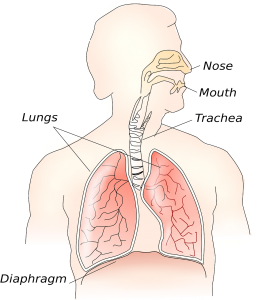Breathing is something we all take for granted as it is something we do without even thinking. Our diaphragm contracts and pulls down to inflate our lungs with air, and then relaxes and our lungs deflate as we breathe out. Human s do this on average 20000 times a day! We have different types of breathing for different activities, such as forced breathing which happens when we sing, exercise or are panicked. When our breathing is forced, we engage other muscles located in the neck and shoulders to breathe in and abdominal muscles to breathe out. These are called the Accessory Muscles of respiration. Both relaxed and forced breathing are regulated by our autonomic nervous system which means we generally don’t think twice about our breathing pattern. However, did you know that most of us only use a third of our breathing capacity? This means our bodies aren’t functioning at their full potential. You may notice signs such as holding your breath for no reason and feeling the need to take a deep breath often.
s do this on average 20000 times a day! We have different types of breathing for different activities, such as forced breathing which happens when we sing, exercise or are panicked. When our breathing is forced, we engage other muscles located in the neck and shoulders to breathe in and abdominal muscles to breathe out. These are called the Accessory Muscles of respiration. Both relaxed and forced breathing are regulated by our autonomic nervous system which means we generally don’t think twice about our breathing pattern. However, did you know that most of us only use a third of our breathing capacity? This means our bodies aren’t functioning at their full potential. You may notice signs such as holding your breath for no reason and feeling the need to take a deep breath often.
Breathing deeply and slowly does more than bring plenty of fresh oxygen into our bodies and expel carbon dioxide, it also improves our cardiovascular function and can help to decrease blood pressure; reduce our sympathetic nervous system activity which gives us the flight or fight stress response and therefore keeping us calmer; help improve digestion as the diaphragm is just above the stomach and the gastrointestinal tract and therefore encourages intestinal movement.
There are various techniques to slow down breathing and make it more efficient. The best place to start is an exercise called Belly/Diaphragmatic Breathing. Start by sitting down comfortably and putting one hand on your chest and the other on the lower ribs, from here you can assess your breathing mechanics and see how much of your breath movement comes from the chest and how much from the abdomen. Ideally, the majority of movement will come from the abdomen, as this means that the diaphragm is engaging well and there is no need to use the Accessory Muscles. From here breathe in deeply and push out your abdomen as much as possible, but keep your top hand movement to a minimum. Try to do this exercise daily or at times of stress and breathe for up to 2 minutes. Belly/Diaphragmatic breathing may feel strange and give some light headedness initially, as your are engaging more of your lung capacity and therefore are getting more oxygen to the body and brain and therefore increasing your potential!
Written by Helen Reeves, Osteopath at the Vale Practice

